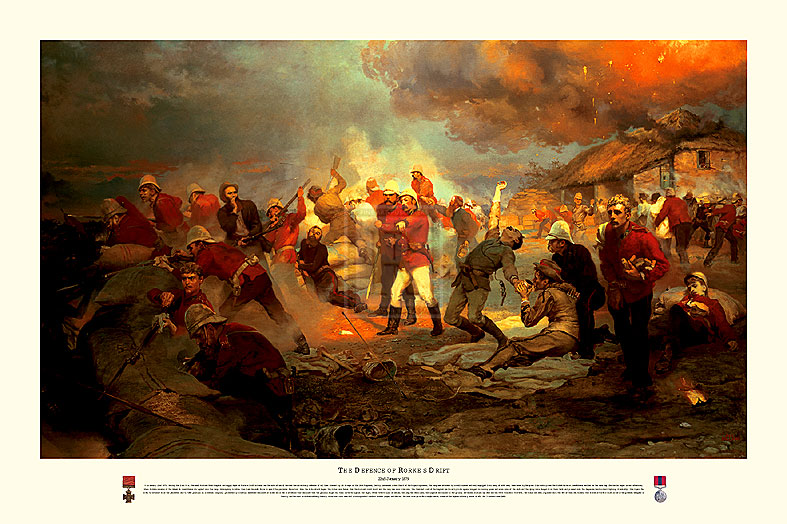
"The Defence Of Rorke's Drift"
Ref: ROS-GB063
by Lady Elizabeth Butler
Paper Size: 39 x 26 ins
Image Size: 35 x 21 ins
Open Edition
On January 22nd 1879, during the Zulu War, the small British field hospital and supply depot at Rorkes Drift in Natal was the site of one of the most heroic military defences of all time. Manned by 140 troops of the 24th Regiment, led by Lieutenant John Chard of the Royal Engineers, the camp was attacke by a well-trained and well-equipped Zulu army of 4000 men, heartened by the great Zulu victory over the British forces at Isandhlwana earlier on the same day. The battle began in mid afternoon, when British remnants of the defeat at Isandhlwana struggled into the camp. Anticipating trouble, Chard set his small force to guard the perimeter fence but, when the Zulu attack began, the Zulus came faster than the British could shoot and the camp was soon overcome. The thatched roof of the hospital was fired by Zulu spears wrapped in burning grass and even some of the sick and the dying were dragged from their beds and pressed into the desperate hand-to-hand fighting. Eventually, Chard gave the order to withdraw from the perimeter and to take position in a smaller compound, protected by a hastily assembled barricade of boxes and it was from behind this barricade that the garrison fought for their lives throughout the night. After twelve hours of battle, the camp was destroyed, the hospital had burned to the ground, seventeen British lay dead and ten were wounded. However, the Zulus had been repulsed and over 400 of their men killed. The Battle of Rorkes Drift is one of the greatest examples of bravery and heroism in British military history. Nine men were awarded Distinguished Conduct Medals, and eleven, the most ever given for a single battle, received the highest military honour of all, the Victoria Cross.
Watermarks or Logos do not appear on actual prints
